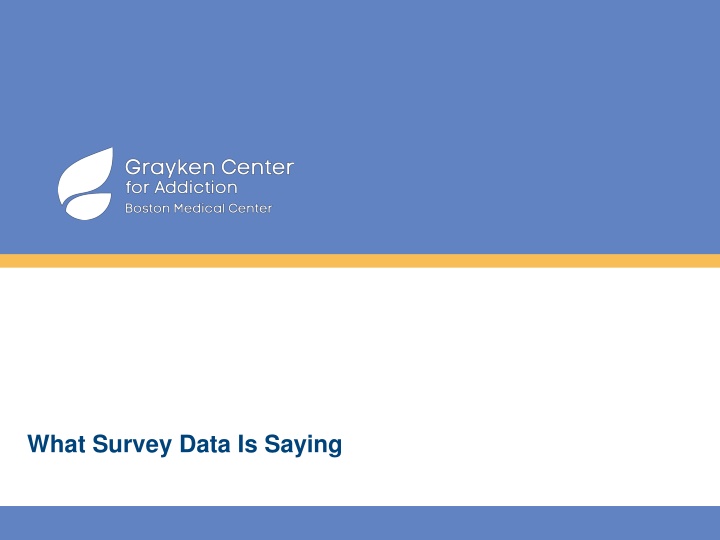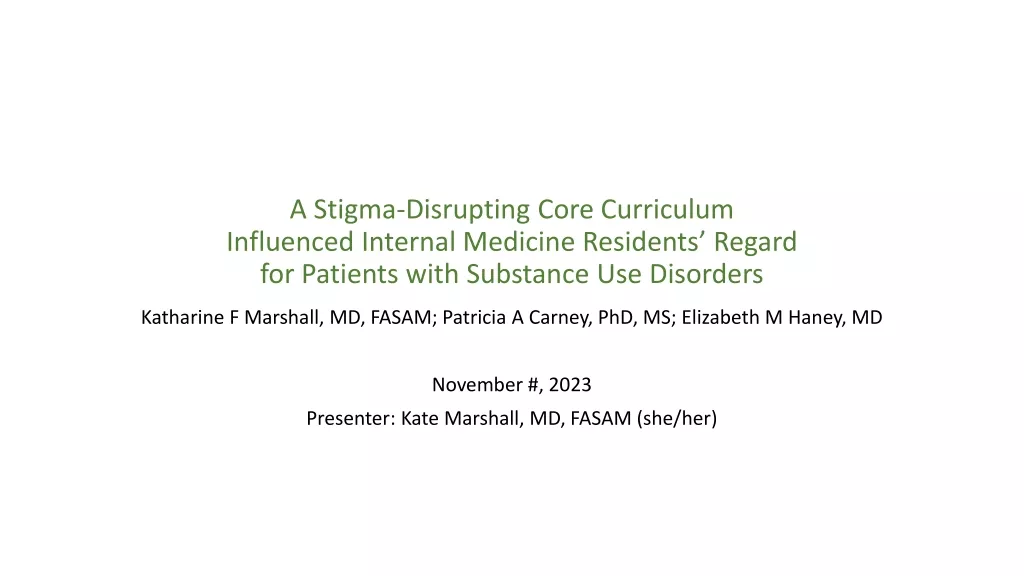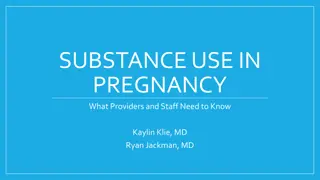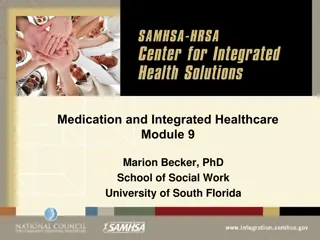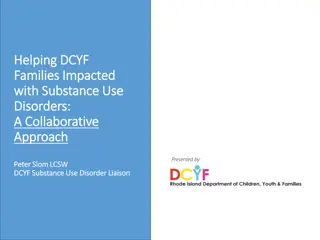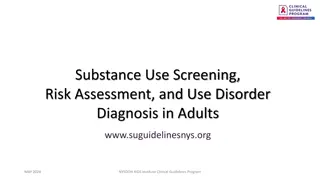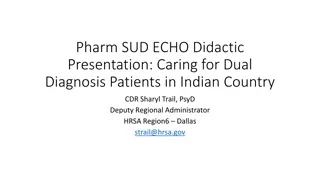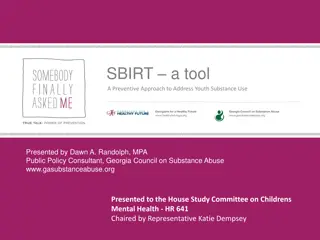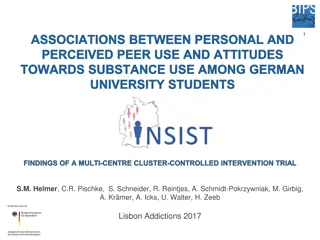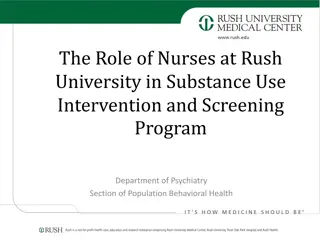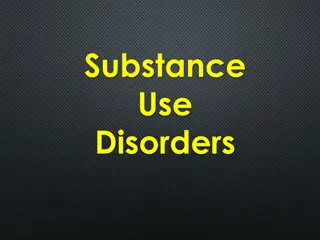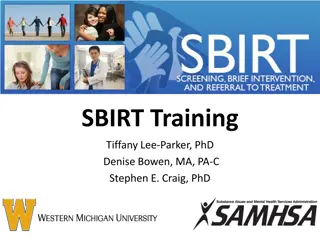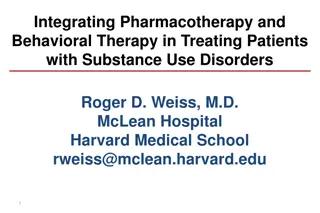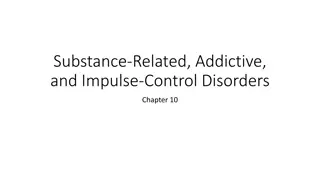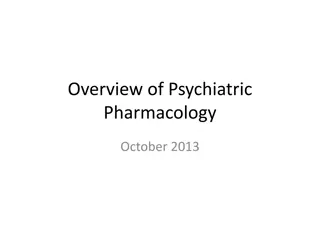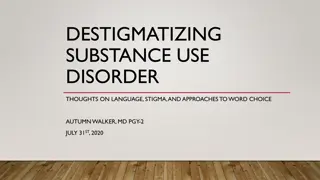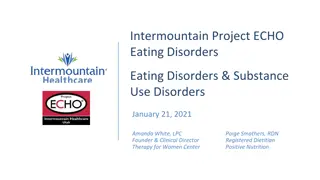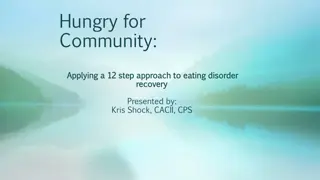Insights on Substance Use Disorders in the Workplace
Employees in various industries are facing challenges with substance use disorders, as highlighted by national surveys and specific data sources. Key findings include statistics on alcohol, illicit drug use, opioid perceptions, and employer policies. Explore the impact and responses to substance use issues in the workforce.
Download Presentation

Please find below an Image/Link to download the presentation.
The content on the website is provided AS IS for your information and personal use only. It may not be sold, licensed, or shared on other websites without obtaining consent from the author.If you encounter any issues during the download, it is possible that the publisher has removed the file from their server.
You are allowed to download the files provided on this website for personal or commercial use, subject to the condition that they are used lawfully. All files are the property of their respective owners.
The content on the website is provided AS IS for your information and personal use only. It may not be sold, licensed, or shared on other websites without obtaining consent from the author.
E N D
Presentation Transcript
Introduction Employees in every industry are grappling with substance use disorders as individuals, family members, and friends. To demonstrate the breadth of this problem, we compiled data from multiple different sources: national surveys, a Massachusetts survey, and a survey of employees here at Boston Medical Center. Key findings from these surveys are shared here. Find the following headlines inside: National Survey Highlights Blue Cross Blue Shield Massachusetts Survey Highlights Boston Medical Center Survey Highlights 2
National Survey Highlights Blue Cross Blue Shield Massachusetts Survey Highlights Boston Medical Center Survey Highlights 3
Substance use disorders directly affected an estimated 20.2m adults in 2014 NATIONAL DATA Alcohol and Illicit drug use are the two leading contributors Alcohol use disorder 16.3 Illicit drug use disorder 6.2 Marijuana use disorder 3.5 Prescption pain reliver use disorder 1.8 Cocaine use disorder 0.9 Heroin use disorder 0.6 0 5 10 15 20 Source: SAMHSA, Center for Behavioral Health Statistics and Quality, National Survey on Drug Use and Health (NSDUH), 2014. https://www.samhsa.gov/data/sites/default/files/report_2790/ShortReport-2790.html 4
A POLITICO/Harvard T.H. Chan School of Public Health poll found that the opioid epidemic is perceived as a major problem by most NATIONAL DATA The Public s Views About How Much of a Problem Opioid Abuse Is in the Country Minor problem 11% Not a problem at all 5% Major problem but not an emergency 53% Don't know/Refused to answer National emergency 28% Source: POLITICO/Harvard T.H. Chan School of Public Health, The Public s Priorities for Congress and President Trump in the Post-Thanksgiving Period, November 15 19, 2017. Base: U.S. adults. https://www.politico.com/f/?id=00000160-2734-d0c8-a9eb-2ff71c200000 5
A National Safety Council survey of HR professionals found employers have low confidence in their policies on prescription drug use NATIONAL DATA Fewer than half of employers are confident in their policies Have in place appropriate policies for this issue Insurance and benefits appropriately structured to deal with this issue Have in place appropriate processes for helping workers with recovery after treatment Quality of procedures for supervisors to follow once they've identified workers who are potentially impaired or addicted Ability of Supervisor/Management to identify potential impairment or addiction Ability of Workers to identify potential impairment or addiction 0 20 40 60 80 100 120 Don't know Not At All Confident Not Very Confident Somewhat Confident Very Confident Source: National Safety Council, Prescription Drugs & The US Workforce, January 2017. Base: 501 HR Professionals. https://www.nsc.org/Portals/0/Documents/NewsDocuments/2017/National-Employer-Addiction-Survey- Methodology.pdf?ver=2018-07-05-105114-883 6
National Survey Highlights Blue Cross Blue Shield Massachusetts Survey Highlights Boston Medical Center Survey Highlights 7
A majority of Massachusetts residents know someone addicted to opioids, and over a quarter know someone who died from an overdose MASSACHUSETTS DATA 50% 45% 27% KNOW SOMEONE ADDICTED TO OPIOIDS KNOW SOMEONE WHO HAS OVERDOSED ON OPIOIDS KNOW SOMEONE WHO HAS DIED FROM AN OVERDOSE *Blue Cross Blue Shield MA conducted a telephone survey of Massachusetts residents on the opioid epidemic https://www.slideshare.net/AndrewDreyfus/massachusetts-public-opinion-poll-the-state-of-the-opioid-epidemic 8
Massachusetts residents are much more likely than other Americans to view the epidemic as a national emergency MASSACHUSETTS DATA National Adults Massachusetts Adults 60% 60% 50% 50% 40% 40% 30% 30% 20% 20% 10% 10% 0% 0% A National Emergeny A Major Problem but not a National Emergency A Minor Problem/Not A Problem A National Emegency A Major Problem But Not A National Emergency A Minor Problem/Not A Problem at All 9 https://www.slideshare.net/AndrewDreyfus/massachusetts-public-opinion-poll-the-state-of-the-opioid-epidemic
Few are optimistic about the state of Massachusetts effectively addressing the Substance Use Disorder epidemic MASSACHUSETTS DATA 47% 36% 9% Getting Better Nothing Changing Getting Worse https://www.slideshare.net/AndrewDreyfus/massachusetts-public-opinion-poll-the-state-of-the-opioid-epidemic 10
Massachusetts residents give poor ratings for available addiction care and treatment MASSACHUSETTS DATA 70% 61% 60% 57% 57% 56% 50% 40% 31% 29% 30% 27% 25% 20% 10% 0% Overall Urban Suburban Rural Excellent/Good Poor/Fair https://www.slideshare.net/AndrewDreyfus/massachusetts-public-opinion-poll-the-state-of-the-opioid-epidemic 11
National Survey Highlights Blue Cross Blue Shield Massachusetts Survey Highlights Boston Medical Center Survey Highlights 12
In an effort to understand how BMC employees thought about mental health and substance use disorders, BMC conducted an internal survey BOSTON MEDICAL CENTER DATA W Wh ho o p pa ar rt ti ic ci ip pa at te ed d i in n t th he e s su ur rv ve ey y? ? W Wh ho o p pa ar rt ti ic ci ip pa at te ed d i in n t th he e s su ur rv ve ey y? ? BMC heard from 1,476 respondents at all levels of the organization. Position at BMC Age Marital Status 35% 1.30% 4.0% 1.70% Administrative Hours of Work 29.8% 21.6% 30% Single (never married) Count 1016 168 Percent 72.7% 12.0% 3.3% 6.2% 5.8% 100.0% Faculty 21.2% 10.30% 25% Regular day shift Rotating shift Regular evening shift Regular night shift Other TOTAL Married or domestic partnership Divorced 21.0% 20.9% 20.2% 32.50% Management 20% 46 87 81 5.0% Nursing 15% Separated 8.2% Physician 1398 10% Widowed 54.30% *Missing=78 4.4% 14.9% 3.8% Other Clinical Staff 5% Support Staff (Facilities, Food Services, Transport, etc...) 0% 25.2% 18-24 25-34 35-44 45-54 55-64 65+ (Years) *Missing=83 Our data set includes many key demographic indicators, among them: race, ethnicity, gender, gender identity, sexual identity, marital status and hours of work. 13
Key Survey Findings: Summary of Survey Highlights BOSTON MEDICAL CENTER DATA 30.8 % of employees surveyed had an immediate family member who had experience with a SUD specifically Between 22% and 38.6% of employees surveyed reported that either they or a family member had experienced depression or anxiety, conditions which are often related to SUD. However 83.1% of employees surveyed did not know what mental health and/or substance use treatment services their health insurance covered Of those employees who have used mental health substance use treatment benefits, only 35.7% were satisfied with them. 51.2% of employees said they were very uncomfortable or uncomfortable speaking with their supervisor about mental health or substance use issues they were experiencing Top two reasons for not speaking to a manager were: concerns about confidentiality and fear of missing out on possible career advancement 14
Key Survey Findings: Summary of the most powerful themes BOSTON MEDICAL CENTER DATA Make confidentiality a priority Fear is a driving force Address the full spectrum of Substance Use Disorder From prevention to recovery Take a clear and incontrovertible stand Communicate a clear broadly and deeply Suspend judgment and stigma Position and leverage managers as the most critical resource Instill accountability provide education and training Understand what people are saying the core issues are Stress and anxiety may be a more critical area to address that SUDs Clarify and educate everyone on available resources and support Benefits, programs Shift the culture one step at a time 15
